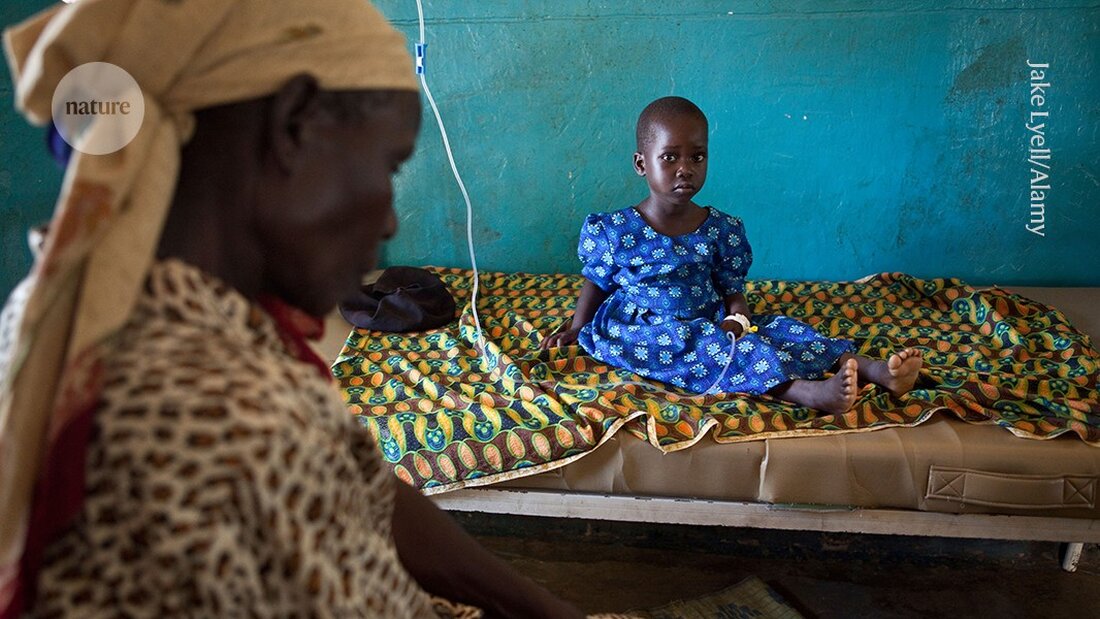Resistance to key antimalarial drugs found in seriously ill children in Africa
Scientists discover artemisinin resistance in seriously ill children in Africa for the first time, jeopardizing treatment for malaria.

Resistance to key antimalarial drugs found in seriously ill children in Africa
Scientists have for the first time Artemisinin resistance, a key antimalarial drug, found in children in Africa with severe disease. The continent accounts for 95% of all malaria deaths worldwide, with children most affected.
“If confirmed by other studies, this could change guidelines for treating severe malaria in African children, who are by far the largest target population,” says Chandy John, a pediatric infectious disease specialist at Indiana University in Indianapolis. John is a co-author of the study published in JAMA 1 published and presented today at the annual meeting of the American Society of Tropical Medicine and Hygiene in New Orleans, Louisiana.
It has already been done before Artemisinin resistance detected in children in Africa, however the now specific identification in children with severe malaria increases the threat level. The malaria pathogen, Plasmodium falciparum, is transmitted through a mosquito bite. To treat "uncomplicated," meaning non-severe, malaria, the World Health Organization recommends treatment with pills containing an artemisinin derivative, which quickly eliminates most malaria parasites in the body, combined with a "partner" drug that circulates longer in the body and kills the remaining parasites. These treatment regimens are called artemisinin-based combination therapies (ACTs).
Treatment of severe malaria, which can include symptoms such as convulsions, breathing problems and abnormal bleeding, requires more intensive measures. Doctors administer intravenous artesunate — a fast-acting version of artemisinin — for at least 24 hours, followed by a dose of ACT. Prompt treatment of severe malaria is crucial for recovery, researchers say.
Difficult to treat
The most recent study in Jinja, Uganda, examined children aged 6 months to 12 years with severe malaria. The researchers found that 11 of the 100 participants, about 10%, had partial artemisinin resistance. This term refers to a delay in eliminating the malaria parasite from the body after treatment; a partially resistant infection is classified as one in which the drug takes longer than 5 hours to kill half of the malaria parasites.
In the past, researchers have linked specific mutations in P. falciparum proteins to the emergence of partial artemisinin resistance 2. This means that the parasites are evolving to escape the “gold standard” malaria treatment. John and his colleagues analyzed the genomes of the parasites that infected the children in their study and found that ten participants had one of two types of these mutations. One of the mutations, found in eight participants, was associated with a longer duration of artemisinin to eliminate the parasite.
Another group of ten children in the study had a malaria infection that returned after completing their treatment. These cases were not due to the presence of known artemisinin resistance mutations. John suspects the return may have been caused by resistance to lumefantrine, a partner drug administered orally in the ACT step of the treatment regimen for severe malaria. However, further studies are needed to evaluate this possibility, says John. “What the return suggests to us is that perhaps the partner drug is not working as well as it should because the parasites are coming back,” he adds.
Since resistance to artemisinin was first identified in Southeast Asia in the 2000s, scientists' biggest concern has been how it will affect the treatment of severe malaria cases, says Philip Rosenthal, a malaria specialist at the University of California, San Francisco. “Even if the drug continues to work, the slower action could make a difference and lead to higher death rates,” he explains.
However, John and his colleagues' study does not provide a definitive answer as to whether artemisinin resistance already leads to worse clinical outcomes, notes Rosenthal. The study group was too small, and all children analyzed eventually recovered, although this process sometimes took longer than expected. This just shows that current treatments for severe malaria are not "quite as good as we might have hoped," he says.
However, Rosenthal and others remain concerned about this news. “The emergence of partial artemisinin resistance in Africa is a major threat to malaria control,” he says. “We are only now beginning to understand what is going on.”
-
Henrici, R.C. et al. JAMA https://doi.org/10.1001/jama.2024.22343 (2024).
-
Rosenthal, P.J., Asua, V. & Conrad, M.D. Nature Rev. Microbiol. 22, 373–384 (2024).

 Suche
Suche
 Mein Konto
Mein Konto
